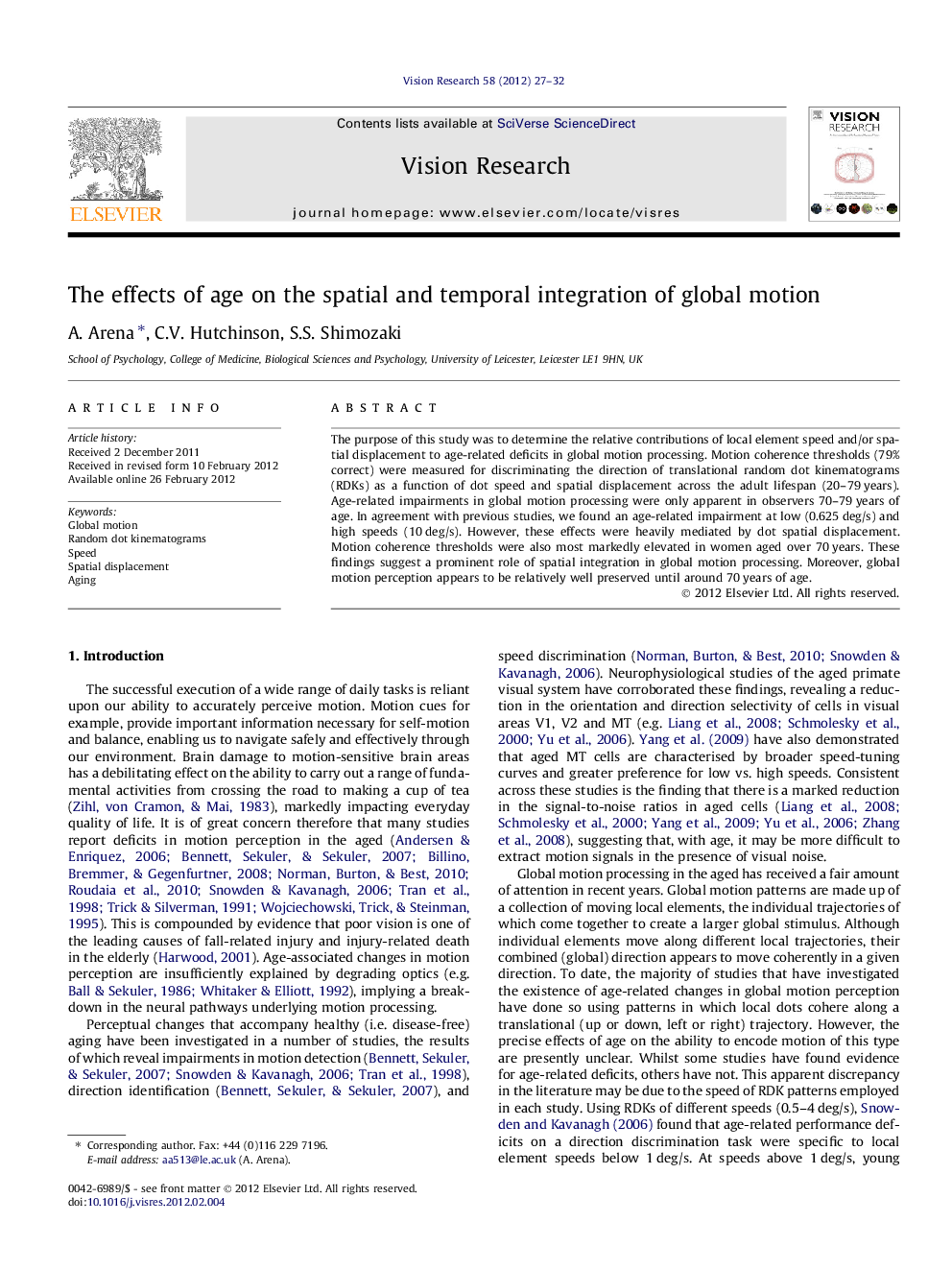| کد مقاله | کد نشریه | سال انتشار | مقاله انگلیسی | نسخه تمام متن |
|---|---|---|---|---|
| 4034043 | 1603236 | 2012 | 6 صفحه PDF | دانلود رایگان |

The purpose of this study was to determine the relative contributions of local element speed and/or spatial displacement to age-related deficits in global motion processing. Motion coherence thresholds (79% correct) were measured for discriminating the direction of translational random dot kinematograms (RDKs) as a function of dot speed and spatial displacement across the adult lifespan (20–79 years). Age-related impairments in global motion processing were only apparent in observers 70–79 years of age. In agreement with previous studies, we found an age-related impairment at low (0.625 deg/s) and high speeds (10 deg/s). However, these effects were heavily mediated by dot spatial displacement. Motion coherence thresholds were also most markedly elevated in women aged over 70 years. These findings suggest a prominent role of spatial integration in global motion processing. Moreover, global motion perception appears to be relatively well preserved until around 70 years of age.
► We used kinematograms to assess global motion perception across the adult lifespan.
► Results show the perception of global motion is well preserved until the age of 70.
► Age differences were only evident when dot spatial displacement was varied.
► Suggests that age-related deficits may reflect impairments in spatial integration.
► Women ⩾70 years appear to demonstrate the most marked decline in perception.
Journal: Vision Research - Volume 58, 1 April 2012, Pages 27–32